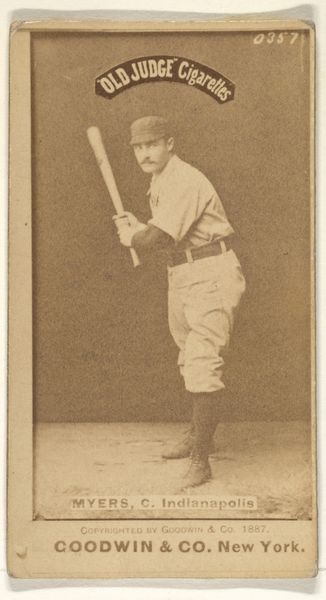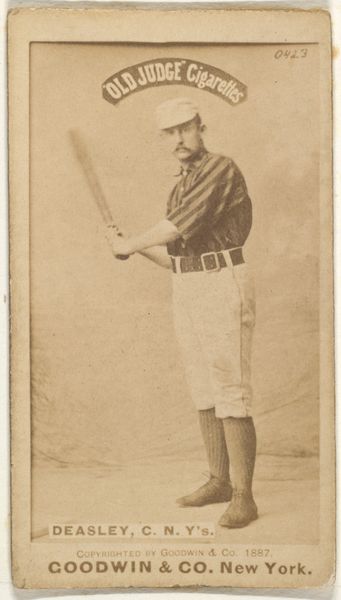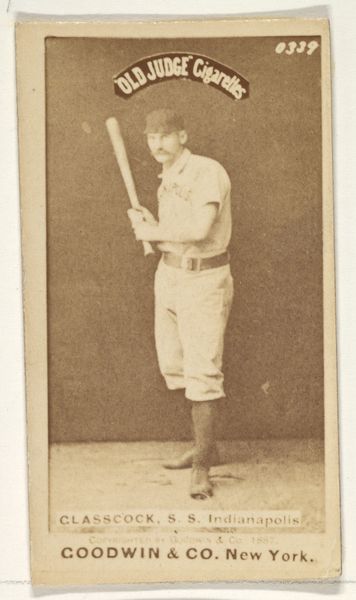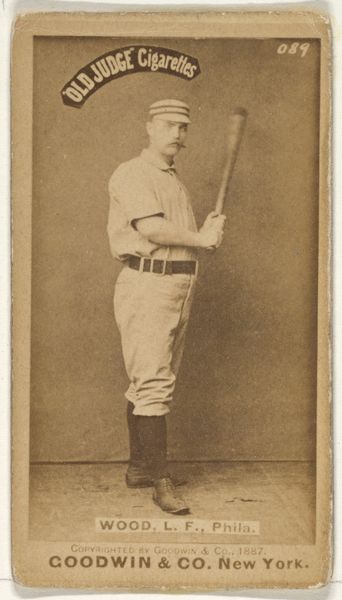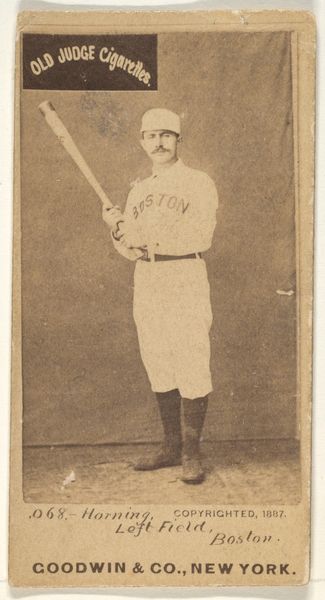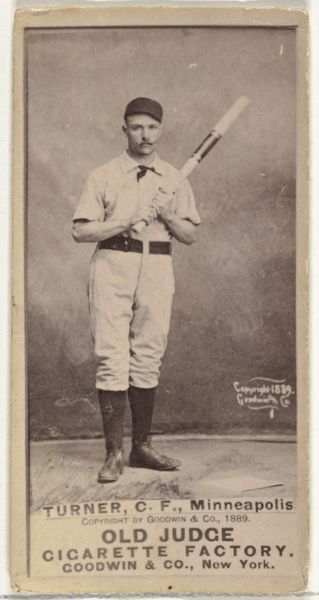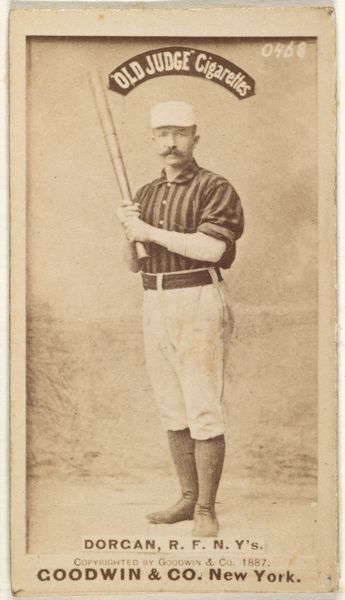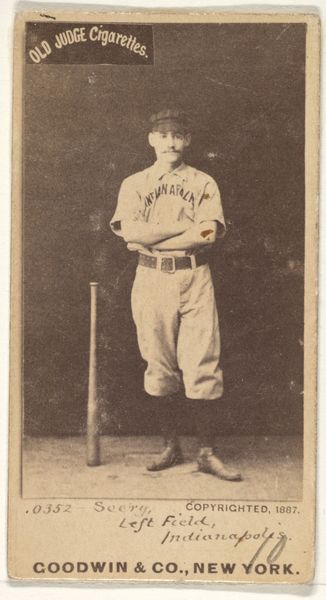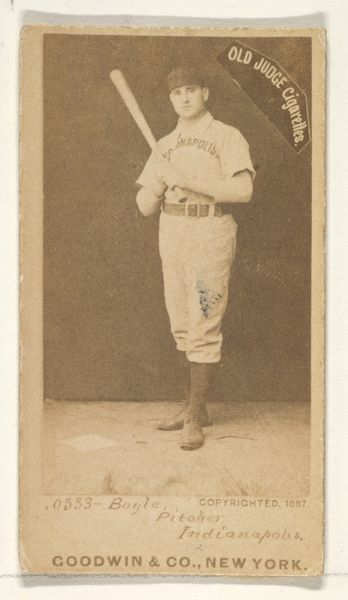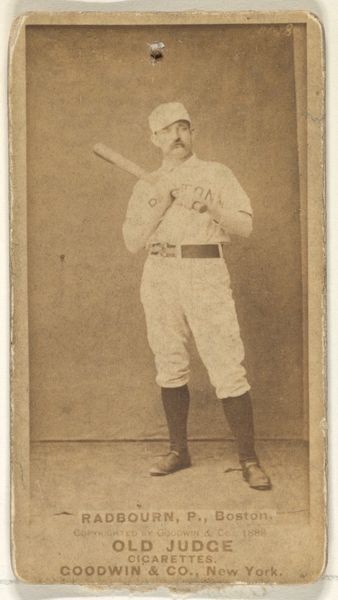
Glasscock, Shortstop, Indianapolis, from the Old Judge series (N172) for Gypsy Queen and Old Judge Cigarettes 1887
0:00
0:00
Dimensions: sheet: 2 11/16 x 1 3/8 in. (6.9 x 3.5 cm)
Copyright: Public Domain
Curator: Look at this fascinating artifact – "Glasscock, Shortstop, Indianapolis," from the Old Judge series of 1887. A baseball card, advertising cigarettes. There's a lot to unpack there, isn’t it? Editor: Oh, absolutely. My first impression? This guy oozes old-school cool. It's the mustache, the slightly-too-big uniform... there's a kind of dignified awkwardness that's utterly charming. Like a sepia-toned Wes Anderson character. Curator: It’s realism at work. These cards, issued by Goodwin & Company, weren't trying to be flashy, although some argue there are traces of Ukiyo-e. They wanted to capture the essence of the player. Glasscock was a real shortstop; a star, even. To me, this image speaks of the nascent commercialization of sport. Editor: It does that, but what does it tell us about the man himself? Shortstop, right? A position of quick reflexes, of seeing the whole field, of leadership. Look at the set of his jaw, the way he holds the bat... there’s confidence, maybe a touch of defiance. It makes you wonder about his story. The cigarettes at the bottom further contextualize it: It situates us squarely within that period and its value system. How did the commodification intersect with players' exploitation? It wasn’t all so simple, I suppose. Curator: You hit on a complex point about the industry's then pervasive sexism and racism. As always, capitalism creates winners and losers, even in a sport that presents the image of the American Dream. Editor: Precisely. Seeing him here, frozen in time on a piece of cardstock that originally pushed tobacco… well, it forces you to consider what aspects of sports—and of its players' lives—are marketed, and which are forgotten. I'm stuck on the feeling it evokes: it's a blend of nostalgia, a little darkness, but mostly... an intriguing curiosity about a man caught between athletic prowess and capitalist machine. Curator: I suppose that in seeing these early attempts to commercialize sports heroes, one can observe our own commodification in real-time: that delicate tension that is so persistent that, maybe, we forget is even there. Thanks, Glasscock.
Comments
No comments
Be the first to comment and join the conversation on the ultimate creative platform.
